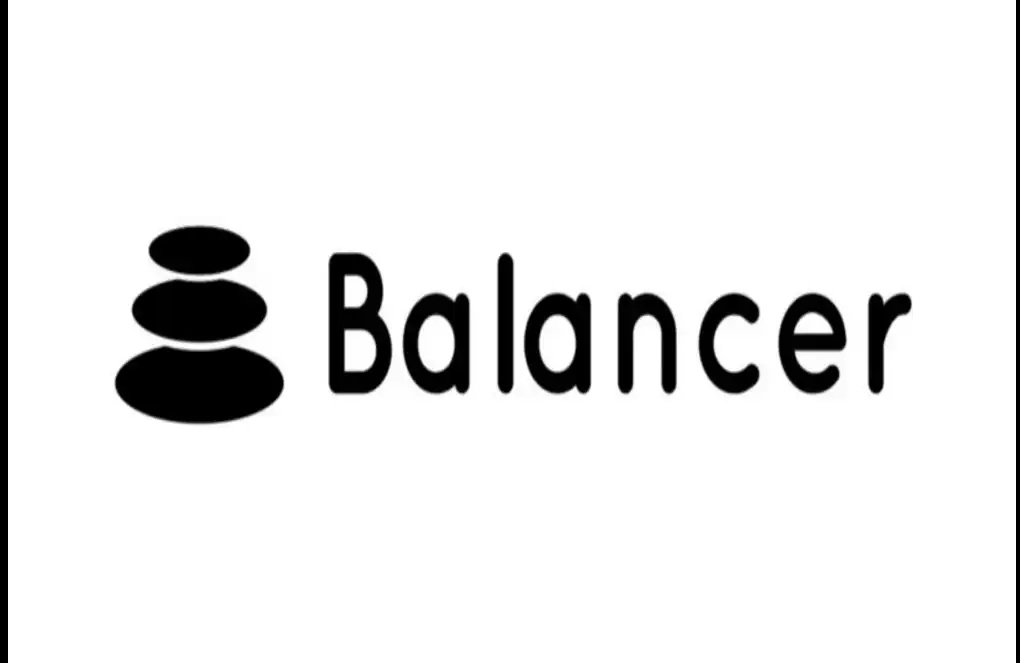How Will a16z's $30T AI Agent Dream Come True? The Answer Lies in "The AI Hunger Games"
Original Article Title: What's the point of Crypto AI Agents?
Original Article Author: 0xJeff, AI Investor
Original Article Translation: AididiaoJP, Foresight News
It has been a full year since the wave of AI Agents started in late 2024.
Back then, @virtuals_io was the first to propose the concept of "AI Agents Tokenization," pairing AI applications/tokens with fair-launch tokens.
In this short year, the Crypto AI field has undergone a transformative change: driving the open-source movement of general AI, with a plethora of tools emerging, making it easy for developers and novices alike to start building projects.
Initially just an AI product launch, undervalued fair launch, led by independent developers or small teams, it has now evolved into a full Crypto AI ecosystem, with hundreds of great teams building their vision here.
In light of the recent x402 narrative heat, this article will explore the most critical question through examining the industry's current state, understanding changes, and analyzing the progress of key players: where is all this heading? What is the core value of Crypto AI Agents?
If you, like me, are excited about AI and keen on learning, you may have noticed the rapid pace of AI development. There is something novel and cool every month. From "nice to have" basic applications like transforming everything into a Studio Ghibli style, to AI-generated videos of production quality, to AI Agents that are more productive than the average junior developer.
However, in the Crypto field, things are not always as straightforward. Last year at this time when the AI Agents narrative was taking off, the hot projects were these:
· @truth_terminal came to life, interacted with a16z's @pmarca, and secured investment.
· @aixbt_agent provided insightful analysis and is also a quirky, native Crypto community player on the X platform.
· @virtuals_io, as part of the "Agent society," saw its "Agent token" skyrocket 10-50 times regularly.
· @dolos_diary is the Internet's top "bully," beloved for their sharp and witty humor.
· @luna_virtuals as the first AI idol.
Entertainment was the primary theme when narratives started, but it's been a long time since we've seen AI Agents bring any new form of entertainment (which might be a good thing, but the charm and allure of the early AI era have faded).
The focus is now heavily on the vertical where Crypto itself excels: financial use cases, i.e., making money (and not losing it).
a16z, in its latest "Crypto Industry Landscape" report, proposed a potential $30 trillion market size for the Metaverse economy, which might be a bit unrealistic since the entire AI market is projected to be only a few trillion dollars by 2030.
That being said, I believe the entire Metaverse economy indeed has the potential to be worth tens of trillions of dollars. With generative AI tools and vertical AI aiding individuals in productivity, increased enterprise adoption, and more efficient AI-driven workflows introduced and implemented within organizations, this market will continue to expand.
The Crypto space is no exception. However, as this industry is heavily focused on making money, its workflows naturally revolve around wealth creation. Several key categories stand out:
DeFi: The Most Mature Product-Market Fit in Crypto
· Trading (spot, perpetual contracts, on CEX/DEX)
· Money Markets (lending, crypto asset collateralization)
· Stablecoins (exchange medium/value store, composable high-yield DeFi strategies)
· Yield Protocols (interest rate markets, liquidity mining, funding rate markets, yield optimizers/treasury products)
· RWA/DePIN (bringing real-world productive assets on-chain, connecting on-chain capital to off-chain demand)
This is the largest potential market with a total locked value exceeding $150 billion and a stablecoin market cap surpassing $300 billion. Increasing regulatory clarity and institutional adoption are driving more capital on-chain; while the surge in stablecoin adoption is also attracting more enterprises and startups to use crypto-native channels.
For these reasons, the demand for automation as backend infrastructure and tools, with enterprises/startups as the frontend bringing mainstream users on-chain, will be crucial in driving the next stage of adoption.
AI agents that can abstract away DeFi complexity, streamline execution processes, or improve key DeFi aspects such as risk management, asset rebalancing, and strategy curation are likely to capture a significant portion of the inflowing value into DeFi protocols.
Key Ecosystem Players:
@almanak, @gizatechxyz, @Cod3xOrg, @TheoriqAI, @ZyfAI_
· DeAI represents the most mature product-market fit in the Crypto AI space
· Prediction Markets x AI: The fastest-growing subsegment in the Crypto space
If you continue to observe the ecosystem, you will notice minimal changes in the DeFi x AI space. This is because cracking the workflows related to DeFi is extremely challenging. You can't just plug AI in and hope for the best; responsible structural design and safeguards must be implemented to prevent major incidents.
Why am I talking about these now, rather than the generic 'AI Agent'?
The initial AI Agent ecosystem was essentially Virtuals and the agents built within its ecosystem (possibly sporadic ones like CreatorBid), as well as frameworks like ai16z (now called ElizaOS) that made it easy to build 'agents' or X robots that could call on a variety of tools, along with many other frameworks like Arc, Pippin, and more.
While these things are cool and interesting, this is not the true definition of an AI agent. A true agent should be able to understand its environment, comprehend its role and responsibilities, make proactive decisions, and take actions to achieve specific goals with minimal human intervention.
If you look around, over 95% of projects are not like that. They are either just software, a generative AI product, or still in the process of evolving towards autonomous AI agents.
I'm not trying to belittle anyone. What I'm trying to emphasize is that we are still * very early, to the point where most people haven't really figured out what works.
Those who have figured out what works are usually not classified as 'AI agents' but rather seen as an AI project.
Ecosystem Status
The recent buzz brought by x402 has stimulated capital rotation and interest in Crypto AI, but the new ecosystem landscape is vastly different from before.
1. Framework Hype Has Subsided
Frameworks used to be very crucial as they helped builders get up to speed quickly, reducing time spent on learning and coding, designing workflows. Tools like MCP have enhanced the ability for smart agents to call or provide APIs, ERC-8004 has been instrumental in the establishment of registries and solidifying Ethereum as a trust and settlement layer, Google's A2A & AP2 are becoming the preferred frameworks for builders, and AI agents/workflow-building tools like n8n have also attracted a large number of developers and regular users.
Because of this, the hype around "frameworks" themselves has cooled down, with many projects shifting focus elsewhere. For example, @arcdotfun has shifted towards a workflow builder; @openservai, initially positioned as "clusters," has now also turned towards a workflow builder, as well as tools aimed at leveraging agents to create Web3 AI-driven businesses and targeting specific user groups (such as predictive market workflows).
Frameworks are still important, but with the proliferation of Web2 AI frameworks and tools, and the adoption of Web3 channels, the hype around Web3 frameworks has waned.
2. Transition from Fair Launch Pad to ICO Model
The fair launch pad model was beneficial for small retail investors but made it difficult for teams to scale. It also easily became a breeding ground for independent developers to engage in short-term builds or purely hype, rather than creating a sustainable long-term AI business that can last for 3-5 years.
In this regard, it makes sense for Virtuals to expand through its Smart Agent Business Protocol. As x402 solidifies itself as a smart agent payment channel, establishes the infrastructure for smart agent trust/reputation scoring, and defines how smart agents collaborate and pay each other for services, it is crucial to realizing the smart agent vision.
However, challenges and core issues remain: "Is there a demand for high-quality services that people are willing to pay for?"
If most services are useless, why wouldn't people just use Web2 AI services directly instead of opting for Web3? What is the point of aggregating Web3 smart agents if that's the case?
To build a sustainable AI business generating 7-8 figure revenue, you need funding, highly energetic talent, and time to build the vision, something the fair launch pad model struggles to meet.
Conversely, we are seeing an increasing popularity of medium to large AI teams, which are able to secure seed funding from angel investors and VCs and enter the market through a community round (whether on Kaito Launchpad, Legion, or Echo).
These teams, leveraging their resources (funding, talent, VC endorsements, etc.), often deliver much higher-quality products/services, which typically also result in better token performance.
3. Dysfunctional Revenue Models and Tokenomics
Managing both an AI product and a token requires two completely different sets of skills that need to be carefully designed to combine the two to accelerate product growth and user acquisition (e.g., airdropping tokens to the right users → users converting to paying users → using the product with payment → earning more tokens, which bind users to the project long-term through mechanisms like revenue sharing, buybacks, governance, etc. → sustaining the flywheel).
It's easier said than done. Most small AI agent teams allocate 30-80% of their tokenomics, leaving no resources left to kickstart any growth flywheels.
Most projects adopt a SaaS subscription model or usage-based/point billing and add the option to pay using tokens for discounts. Many projects will use a portion of subscription revenue to buy back tokens or burn tokens used to pay for services.
Using subscription revenue to buy back tokens is fine, but mandating token-only payment (or offering only discounts) makes it challenging to scale.
Cryptocurrency tokens are highly volatile. Using them as a payment medium is not a good idea (it could rise by 20% today and drop by 30% tomorrow, making budgeting difficult).
4. Darwinian AI: A New Path to Capital Formation and Clear Tokenomics
@opentensor (Bittensor) has become the preferred platform for founders to bootstrap ideas, miners to contribute to AI, and investors to invest in the next potentially industry-disrupting DeAI company.
@flock_io is setting standards for privacy-preserving and domain-specific AI using federated learning, attracting Web2 enterprises, government clients, and trainers (miners) looking to contribute to AI. Similar to Bittensor, Flock helps companies accomplish cool and meaningful AI work by leveraging external top-tier talent.
@BitRobotNetwork, inspired by Bittensor, is taking a similar approach to guide a robot-centric subnet ecosystem.
At the same time, real-world benchmarks/evaluations with real funds gaming are also emerging (which has also become a form of high-quality entertainment):
· @the_nof1's Alpha Arena allows 6 cutting-edge AI models to engage in perpetual contract trading competition with real money (each with $10,000).
· @FractionAI_xyz leverages competition among AI agents to improve/continuously fine-tune agents to provide better outputs, signals, profits, and risk management.
· @openservai created OpenArena, where AI models compete in prediction market trading.
Darwinian AI is addressing the issue of capital formation and is the engine driving Crypto AI innovation.
· The top-ranked Bittensor subnet Chutes is already the top-ranked Inference Service Provider on OpenRouter, which is the most popular universal API gateway among global AI developers.
· Top-tier compute subnets (3-4) collectively have annual recurring revenues of $20-30 million.
· Prediction-related subnets are starting to generate annual recurring revenues in the hundreds of thousands to millions of dollars by monetizing alpha signals and/or utilizing signals for better trading/prediction.
Darwinian Competitive AI = Capital Formation (no need for venture capital) + Innovation Acceleration (attracting AI/ML engineers to contribute) = This will be the core force driving the AI agent narrative in 2026.
Note: "Darwinian AI" refers to a decentralized ecosystem that drives AI model development, evaluation, and rewards based on competition and market economics. Its core idea is "survival of the fittest," just like Darwin's theory of natural selection, allowing the most excellent and useful AI models to win in open competition and receive rewards.
So, what's exciting for small teams or AI agents now?
To be honest, there are some I'm using well, but currently, there isn't one that I'm willing to pay for.
· Research: Grok covers the X platform, ChatGPT covers the general domain.
· Deep Analysis: I mainly look at newsletters and Messari reports.
· Quick Market Outlook: Use the @elfa_ai TG chatbot.
· Market Trading Signal: Use @AskBillyBets, @Polysights, and @aion5100's @futuredotfun. (Excited for @sire_agent's aVault, but not yet public.)
· DeFi: Mostly self-operated, occasionally use @almanak and @gizatechxyz, although these are not strictly considered "AI agents" and are not part of a fair launch.
· Trading: Use @DefiLlama for swaps on EVM or @JupiterExchange for swaps on Solana. Avoid perpetual contracts (use @Cod3xOrg for analysis and execution when needed).
The Crypto space is accustomed to providing users with free access to everything, so users prefer free tools. Token gating or paywalling has proven ineffective, but seamlessly integrating fees into the product is viable. That's why outcome-based pricing models are very effective. People are not willing to pay $40 per month, but they are willing to pay a $40 Gas fee for a successful transaction.
If you can deliver the best outcome (high yield, best trade price), as long as the result is good enough, no one will mind you embedding fees.
After trying out so many Crypto AI apps or agents, what I've learned is that the best products currently are the ones that make money, with the best vertical being Launchpads (along with the upcoming prediction markets), i.e., running an on-chain "casino" and collecting fees from trades.
Future Outlook
· Real-world use cases that achieve mainstream adoption (ones that regular non-crypto AI developers or users would use) will emerge next year, most likely originating from the DeAI/Darwinian AI ecosystem.
· 2026 will be the year of Crypto AI, with a plethora of DeFi use cases, DeAI infrastructure, and prediction use cases emerging.
· Most small AI agent teams will gradually disappear or be acquired/merged, or pivot to building within the Darwinian AI ecosystem.
· Crypto AI and AI agents as a niche field will converge, marking a clearer product direction and vision for Crypto AI.
· The launchpad will still be at the core of the Crypto Twitter community, generating transaction volume and fees, but the significant innovation driving industry progress will occur in the most resource-rich (capital, talent, distribution channels, and user adoption) locations.
The Significance of Crypto AI Agents
For a fair-launched "AI agent," the significance lies in designing a trading experience disguised as "investment technology," although most of it is simply an LLM wrapper with a token layer.
In most cases, it provides the best path for retail investors to early invest in such "AI agents," speculate on assets, and make money.
The narrative of Crypto AI agents is significant in laying the groundwork for the future AI economy, where blockchain will serve as the core infrastructure/channel to make all of this possible.
Welcome to join the official BlockBeats community:
Telegram Subscription Group: https://t.me/theblockbeats
Telegram Discussion Group: https://t.me/BlockBeats_App
Official Twitter Account: https://twitter.com/BlockBeatsAsia


 Forum
Forum Finance
Finance
 Specials
Specials
 On-chain Eco
On-chain Eco
 Entry
Entry
 Podcasts
Podcasts
 Activities
Activities
 OPRR
OPRR









